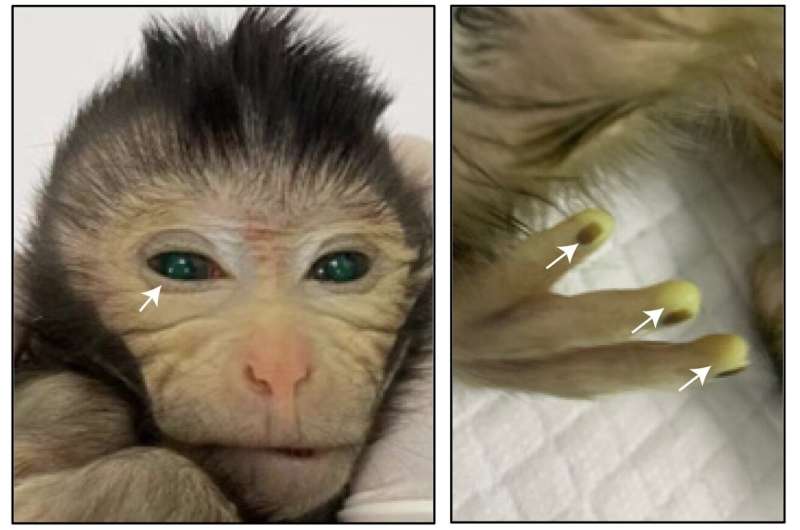This article has been reviewed according to Science X's editorial process and policies. Editors have highlighted the following attributes while ensuring the content's credibility:
fact-checked
peer-reviewed publication
trusted source
proofread
Researchers generate live-birth chimeric monkey using embryonic stem cells

A new study has reported the generation of a live-birth chimeric monkey using a high contribution of embryonic stem cells (ESCs). This research was completed by Dr. Liu Zhen's research team and Dr. Sun Qiang's research team at the Institute of Neuroscience, Center for Excellence in Brain Science and Intelligence Technology of the Chinese Academy of Sciences (CAS), and by Dr. Miguel A. Esteban's research team at the Guangzhou Institute of Biomedicine and Health of CAS.
This work, titled "Live birth of chimeric monkey with high contribution from embryonic stem cells," was published online in Cell on Nov. 9.
Chimeric mice and rats developed through early embryo complementation with homologous ESCs are well established and have been used for gene-targeting model generation, whereas chimerism in other species, including nonhuman primates, has not been very successful.
In this study, Liu and colleagues systematically tested various culture conditions for establishing naïve monkey ESCs and optimized the procedures for preparing the chimeric embryo culture. This approach generated an aborted fetus and a live chimeric monkey with a high donor ESC contribution.
A stringent characterization pipeline demonstrated that donor cells efficiently (up to 90%) incorporated into various tissues (including the gonads and placenta) of the chimeric monkeys.
This study has major implications for the study of naïve pluripotency in primates and genetic engineering of nonhuman primates. It deepens our understanding of the pluripotency and totipotency of ESCs from primate species and also paves the way for generating nonhuman primate models with sophisticated gene modification.
The research project was designed and performed in accordance with extremely stringent ethical standards. All experiments followed the guidelines of the International Society for Stem Cell Research (ISSCR). An ethics committee at the Institute of Neuroscience, Center for Excellence in Brain Science and Intelligence Technology of CAS, helped ensure the study was ethically sound.
More information: Live Birth of Chimeric Monkey with High Contribution from Embryonic Stem Cells, Cell (2023). DOI: 10.1016/j.cell.2023.10.005. www.cell.com/cell/fulltext/S0092-8674(23)01087-5
Journal information: Cell
Provided by Chinese Academy of Sciences




















